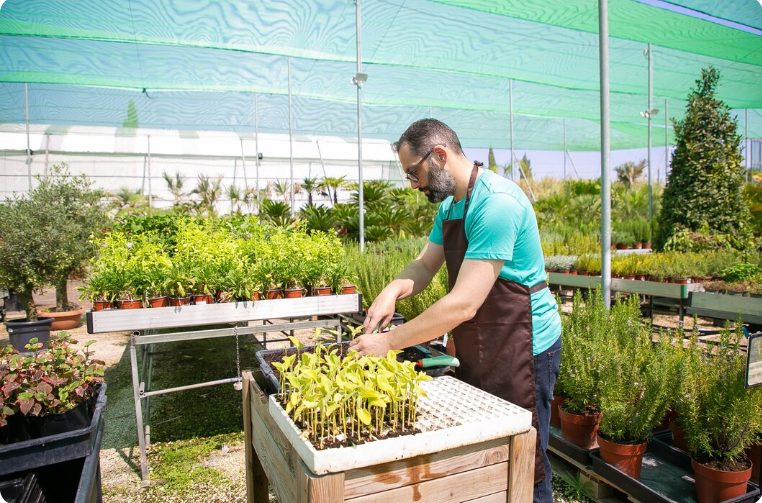
10 Raised Garden Box Ideas That Work Anywhere

Raised garden boxes make gardening simple and neat. They give better soil, fewer weeds, and easy access to your plants. You can place them in small yards, large backyards, or even on patios.
These boxes come in many styles—wood, metal, stone, and even painted versions for kids. Each idea adds charm and purpose to your outdoor space.
No need for a big budget or special tools. Most boxes use basic materials. Some lift plants up for comfort. Others use smart shapes to save space.
These garden boxes help your plants grow healthy and strong. They also give your garden a clean, organized look.
This post shares ten creative raised garden box ideas that work well in all kinds of spaces. Some are simple. Some are bold. All of them bring life to your garden.
Ready to dig in? These ideas will inspire your next garden project.
10 Raised Garden Box Ideas
Raised garden boxes help grow healthy plants. They make gardens look tidy and easy to care for. Many styles work in small and big yards.
Some use wood, others use metal or stone. These ideas give you strong boxes and pretty garden spaces.
Let’s explore 10 raised garden box ideas you can build or buy.
1. Classic Wooden Garden Boxes
Wooden garden boxes work well in most spaces. Pine, cedar, and redwood last a long time. Boards fit together to form a simple rectangle. Fill it with soil and start planting. These boxes look natural and warm.
Use stains or paints to match your garden style. Add corner posts for extra strength. You can also raise them higher with legs.
Image Prompt: A neat backyard with three wooden garden boxes filled with green plants, sitting on a layer of brown mulch.
2. Galvanized Metal Garden Boxes
Galvanized steel garden boxes give a modern look. They come as pre-made tubs or build-from-sheets. Metal stays strong in bad weather. It also heats the soil faster. That helps plants grow early in spring.
Line the inside with fabric or cardboard to protect the metal. These boxes last many years.
Image Prompt: A clean garden with silver metal raised boxes, growing vegetables like lettuce and tomatoes, with tools beside them.
3. Concrete Block Garden Boxes
Concrete blocks make strong and cheap garden boxes. Stack the blocks to form a square or rectangle. The holes in the blocks can hold flowers or herbs.
These beds don’t rot and stay in place. Great for windy or rainy areas. Paint the blocks for a bright touch.
Image Prompt: A square raised bed made from gray concrete blocks, filled with soil and herbs, set on gravel with small plants in block holes.
4. U-Shaped Garden Boxes
U-shaped boxes let you reach every plant without stepping inside. They work well in corners or open spaces. Build them from wood or metal. Make the center wide enough to stand and turn.
Grow herbs on one side, veggies on the other, and flowers at the front.
Image Prompt: A backyard with a large U-shaped raised garden bed, planted with lettuce, tomatoes, and flowers, with a clear walking path in the center.
5. Tiered Garden Boxes
Tiered boxes look like steps. Each level holds different plants. The top tier can grow herbs. The middle tier can hold vegetables. The bottom tier fits flowers or bushy greens.
This idea works well on hills or small yards. It saves space and adds style.
Image Prompt: A three-level wooden tiered garden box with leafy greens on each step, set on a sunny patio.
6. Kids’ Garden Boxes
Short, colorful garden boxes make gardening fun for kids. Use soft wood. Paint the sides with bright colors. Keep them low to the ground.
Let kids plant flowers, carrots, or strawberries. Give them small tools to use. These boxes build joy and garden skills.
Image Prompt: A small painted garden box with young plants growing, set in a yard with toys nearby and two children watering plants.
7. Balcony Garden Boxes
Small spaces can grow food too. Use raised boxes with legs or wheels. These fit on balconies or patios. Keep the box light. Use plastic, metal, or thin wood.
Grow herbs, lettuce, or cherry tomatoes. Add a tray under to catch water.
Image Prompt: A small city balcony with two raised boxes on legs, growing herbs and vegetables, with a watering can nearby.
8. Stone Raised Garden Boxes
Stone beds last a lifetime. Use flat stones or bricks. Stack them without cement or use mortar for strong walls. These boxes look natural.
Stone holds heat, which helps plants grow. These beds need flat ground and care during setup.
Image Prompt: A garden area with low stone raised beds, planted with colorful flowers and herbs, with grass paths in between.
9. Trellis Garden Boxes
Add a trellis to the back of a garden box. Grow beans, peas, or cucumbers. This saves space and adds height. Wood and metal both work.
Attach the trellis firmly so it stays up in the wind. These boxes grow food and beauty.
Image Prompt: A wooden raised bed with a tall trellis, climbing green bean plants, and flowers around the base, set beside a fence.
10. Raised Beds with Built-in Benches
Garden boxes with benches let you rest while you work. Build a wide wood edge or add small seats on the sides. These beds fit in quiet garden corners.
Perfect for older gardeners or people who need to sit often.
Image Prompt: A wooden raised garden box with built-in bench seats on two sides, filled with herbs and small vegetables, with garden gloves resting on a bench.
FAQs
How deep should a raised garden box be?
Most are 8 to 12 inches deep. Root crops need at least 12 inches.
What soil works best in raised boxes?
Use a mix of compost, topsoil, and peat or coco coir. Keep it light and well-drained.
Can I place boxes on cement or a deck?
Yes. Add a layer under to stop soil loss. Make sure there’s drainage.
Do garden boxes need a bottom?
No. Most work best without a bottom so roots can grow deep.
What can I grow in a garden box?
Grow vegetables, herbs, flowers, and even strawberries or peppers.
Conclusion
Raised garden boxes help every gardener. They keep plants healthy and soil rich. They make gardening easier for kids, older adults, and people with less space.
Every box on this list fits a different need. Some save space. Some add beauty. All help grow more food and flowers.
Pick one style and start with it. You’ll enjoy clean lines, strong plants, and less bending. A simple box can bring joy all season long.
